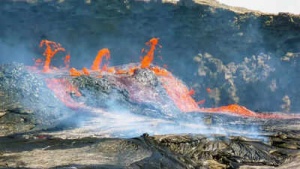UNESCO World Heritage sites represent places of exceptional cultural or natural significance. Recognized for their universal value to humanity, these sites are preserved for generations to come. To earn this distinction, a site must possess historical, cultural, and often architectural brilliance. Here's a curated selection of ten certified classics, iconic UNESCO heritage sites that are enduring, extraordinary, and truly awe-inspiring.
Enter Petra, and you'll find yourself in a sandstone masterpiece straight out of a legend. Carved into vibrant pink cliffs, this ancient Nabataean city dramatically emerges at the end of a narrow gorge. Regardless of how many images you've seen, experiencing it in person is breathtaking.

The Great Wall snakes across mountains like a giant's sketch on a scroll. More than just its immense length, it embodies centuries of defense, resolve, and dynastic ambition. Standing atop it evokes a sense of invincibility, particularly considering it was built without modern machinery.

Older than logic and sharper than modern rooftops, the Pyramids of Giza remain mathematically perplexing. Unaffected by cameras or desert heat, they have captivated humans for 4,500 years and will continue to inspire awe.

Perched high in the Andes, Machu Picchu is both an Incan masterpiece and an enigma. Was it a sacred site or an ancient refuge? Regardless, the views are guaranteed to take your breath away, even before the altitude does.

At sunrise, it glows. By midday, it dazzles. As dusk falls, it becomes a silhouette. Angkor Wat is more than a temple; it's a living spectacle of light. The world’s largest religious monument maintains its fame with serene grace.

You've seen arenas, but this is the granddaddy of them all. The Colosseum once hosted gladiators, wild animals, and emperors with questionable morals. Today, it provides history and awe, thankfully without the lions.

The Taj Mahal stands as an iconic testament to love and Mughal architecture. Built by Emperor Shah Jahan in memory of his wife Mumtaz Mahal, this white marble mausoleum features intricate inlay work and symmetrical gardens, making it one of the most admired and visited monuments globally.

Easter Island is famous for its mysterious moai statues – colossal stone figures carved by the island's original inhabitants. Scattered across the volcanic landscape, these statues reflect a rich Polynesian heritage and spiritual tradition, symbolizing human creativity and enigma.

The Palace of Versailles, a UNESCO World Heritage Site, represents absolute monarchy and French opulence. Once the residence of Louis XIV, it boasts lavish halls, elaborate gardens, and the famous Hall of Mirrors, remaining a 17th-century art and architecture masterpiece.

Stonehenge, a UNESCO World Heritage Site in southern England, is among the world’s most famous prehistoric monuments. Dating back over 4,500 years, this enigmatic stone circle continues to fascinate historians and archaeologists. While its precise purpose is debated, it's believed to have served ceremonial or astronomical roles.

Newer articles
Older articles
 Moto G54 Gets Significant Price Cut in India, Making Budget Smartphone Even More Appealing
Moto G54 Gets Significant Price Cut in India, Making Budget Smartphone Even More Appealing
 Africa's Rift Valley: Mantle Upwelling Drives Continent's Split and Birth of New Ocean
Africa's Rift Valley: Mantle Upwelling Drives Continent's Split and Birth of New Ocean
 X Cracks Down: Over Half a Million Indian Accounts Suspended for Policy Breaches
X Cracks Down: Over Half a Million Indian Accounts Suspended for Policy Breaches
 Vijay Sethupathi Apologizes Amid Controversy Over Son Surya's Debut Film 'Phoenix'
Vijay Sethupathi Apologizes Amid Controversy Over Son Surya's Debut Film 'Phoenix'
 Jadeja's Accuracy Questioned: Ex-India Pacer Slams Spin Strategy in England Test Loss
Jadeja's Accuracy Questioned: Ex-India Pacer Slams Spin Strategy in England Test Loss
 IRCTC's AI Chatbot Revolutionizes Train Ticket Booking, Refunds, and Information Access
IRCTC's AI Chatbot Revolutionizes Train Ticket Booking, Refunds, and Information Access
 Ashada Gupt Navratri 2025: Unveiling Dates, Sacred Rituals & Hidden Significance of the Monsoon Festival
Ashada Gupt Navratri 2025: Unveiling Dates, Sacred Rituals & Hidden Significance of the Monsoon Festival
 Google Maps Enhances Directional Accuracy with Fused Orientation Provider Update
Google Maps Enhances Directional Accuracy with Fused Orientation Provider Update
 xAI to Open Source Grok, Democratizing Access to Musk's AI Chatbot
xAI to Open Source Grok, Democratizing Access to Musk's AI Chatbot
 Android Users Urged to Patch Now: Critical Security Flaws Expose Devices to Attacks
Android Users Urged to Patch Now: Critical Security Flaws Expose Devices to Attacks